#hokkaido railway
Explore tagged Tumblr posts
Text

北海道室蘭本線 栗丘駅と栗山駅との間のサミットを行くD51牽引の貨物列車
#steam locomotive#landscape#japan#railway#photography#Hokkaido#Muraran Line#蒸気機関車#鉄道写真#北海道#室蘭本線#栗丘駅#D51
17 notes
·
View notes
Photo
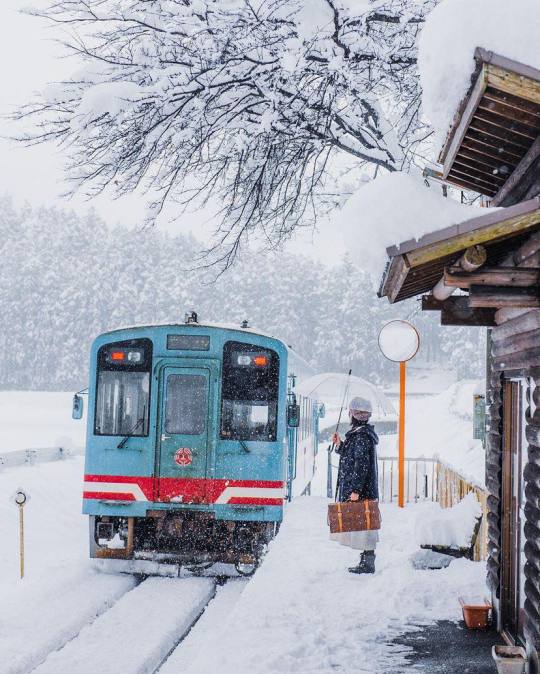
Waiting For You by yukiii_fleur
Photo reminds me of a story in Hokkaido where a high school girl is the only passenger boarding the train everyday to school and back home.
Ridership at the Kyu-Shirataki station and a few neighbouring ones had fallen because of the remote location. But students still depend on the train and parents asked the company keep the station open for their children.
Japan’s efficient high-speed rails have continued to expand to the outskirts of the country, rendering many of Japan’s older, low-tech railways obsolete.
But if this story of a young girl and her special connection to the Kyu-Shirataki station is any indicator, Japan’s disappearing rural railroads will be remembered for their service to even the most remote parts of the country.
Source : bloomberg.com
#japanese train#japanese railway#japan#hokkaido#kyu shirataki station#studio ghibli#winter in japan#snow in japan#japanese train station
34 notes
·
View notes
Text

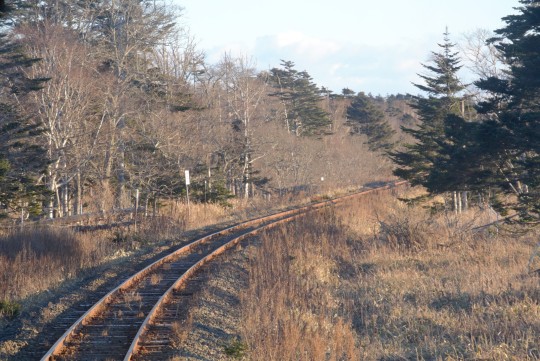
Nemuro Main Line
3 notes
·
View notes
Video
youtube
道南いさりび鉄道と並走、国道228号、北海道 2023-06
0 notes
Text









旧別海村営軌道風蓮線奥行臼停留所
Former Betsukai Village Railway Furen Line Okuyukiusu Station
北海道野付郡別海町 Notsuke-gun, Betsukai-cho, Hokkaido, Japan
2024/08
57 notes
·
View notes
Text
See No Evil
| The mysterious nobleman Noritoshi Kamo is looking to purchase a mansion in Tokyo City. You’re the solicitor sent to aid him and you do, it’s just that… he has odd habits. He talks all night and sleeps all day, doesn’t allow mirrors in his castle, can summon wolves at a whistle. And lately you’ve come to suspect that he’s not letting you leave. |
| #1 | noritoshi kamo x reader | bram stoker’s dracula au | masterlist | heavy religious symbolism, aged terminology | 1k words |

[your journal]
3 May 1876– Left Yokohama at 8.35 PM. It is a most wondrous machine, the creation of the finest European minds, the railway train! It arrived as a caterpillar on a leaf-edge, chugging soot onto my freshly laundered cottons, carriage upon carriage in its bowels! I hardly had time to admire the clear window panes, the tea-cup holders, the cushioned seat before I arrived in Tokyo, less than an hour at that. Ah, the modern era!
Had a most delightful plate of grilled beef and a mug of steaming coffee with milk at the Time Vessel Inn, stayed the night. I left Edo years ago and returned to Tokyo– the men now wear western hats over their kimono, streets are wide as London’s, concrete buildings as of New York in Ginza, streetcars driven by women who smoked. Father would have a heart attack had he been here.
Walked to the post office, received letter from Mr. Hawkins, smoked too much enroute to walk back myself, took a rickshaw. The puller, a rickety old Okinawan, set his sly eyes on the cross round my neck, and I promptly put it inside. These scoundrels are untrustworthy at the best of times, pagan at worst. Shogun men come, you no Christian okay? – and he urged me to agree till I did. Lord, I do hope it is better in the prefectures.
4 May– In the interests of time I am taking horse mounts instead of a carriage. Mr. Hawkins, bless that man, has arranged my lodgings along the way to Hokkaido, says his letter. He has further parceled me cash in advance, stored at those lodgings, so that I may never run dry. Among the Japanese the sympathy I could never glean I am granted oodles from a White man in Exeter.
My client is a deposed shogun of the Kamo Clan, Noritoshi-sama. Imagine my disbelief when Mr. Hawkins assigned me to such a lucrative business for my first solicitor work! I have prepared well, again and again, and I shall not let him down.
Had miso soup over rice and eggs. (Mem. Get recipe).
Left Tokyo at 4.30 AM, reached Fukushima by noon. Exchanged horses before the narrow pass through the Abukuma Mountains. Now another long stretch till Moroika in the Iwate prefecture. I fear that despite my young age my back is not built for this torment. Onwards we ride again! Unfortunately!
Farmers plant rice in those ankle-deep pond-fields. Some things never change.
Reached Moroika 7 PM, exchanged horses. The countryside is as I remember it, but I am far too exhausted to be poetic about it. Dined and lodged at the ancient Tengen Hotel, collected the cash parcel. Fireflies outside my window.
5 May– Left Moroika at 6.30 AM. Another 6-7 hour ride to the northernmost tip of mainland Japan, this little town called Oma in Aomori.
I can see my freezing breath-smoke as I write with shaking hands, slouched on my horse. My legs, back, belly, shoulders, arms, neck, even hands hurt. I cannot grip my reins anymore. I think of Mr. Hawkins, the cash parcel at the next lodge. Perhaps I was not made to be a solicitor.
Hail Mary, full of grace, the Lord is with thee.
I have made up my mind. I shall show Noritoshi-sama the old Chinese mansion, vestiges of a former noble time. I wondered if I should instead display the Buddhist temple-turned-castle near Roppongi, but I believe he should prefer the outskirts of Tokyo more. Well, the decision lies with him, after all.
Imagine if I ruined it all up! Barged into the shogun’s bedroom and demanded that he buy the disco club instead! Or the new English townhouses! I wonder if he would cut me with his longsword or have his horses trample me.
Blessed art thou among women and blessed is the fruit of thy womb, Jesus.
I am too giddy now. I can hardly keep my eyes open for I am tired, tired. And cold. The temperature has dropped like dead flies the more I ride. My thoughts, cockroaches released from a jar, run amok.
Truly, I want to sit on my horse and weep. I cannot bear this any longer.
The farther I go from the beating heart of Tokyo the more this country vexes me. There is nothing but trees. No people, only trees and dirt for miles. Red-leaf maple, spruce, oaks, beech. Cold.
Holy Mary, Mother of God, pray for us sinners, now and at the hour of our death.
There is more humanity in filthy streetcar exhaust smoke than here. More God in the shaved cunts of night-bar transvestites than in this desolation. I would drink the sewers under Tokyo than travel any longer.
Amen.
3 PM– Reached Oma. Had a heavy lunch full of oysters, chicken, crab and drank half a bottle of sake. It is hilarious how shocked the waitress was when I sent for my fourth bowl of rice!
Reading back on my earlier notes I feel that I mayhaps overreacted slightly. It wasn’t that bad, honestly. I just am not used to physical exertion.
Lounged about the beach till 4.35 PM. Ferry to Hakodate reached a little before 8 PM. Hokkaido finally! Tired, will fall asleep in my suit, no energy to bathe or change.
Noritoshi-sama, man of my miseries, I meet you tomorrow. I have never met nobility before (Mem. Practice deep bowing), but I hear from the waitress that he is rumored to be so handsome. How wonderful it will be if he turns out to be an armour-clad samurai! Perhaps he keeps ninjas about his castle. Perhaps he is lonely, as I am, and takes me to be his bride. I cannot even write this with a straight face, I cannot stop giggling at the thought now! It would be a perfect romance, a Cinderella story! I would certainly not have to work a job or travel anymore.
Suddenly my tiredness is -whoosh- gone! Oh be calm, fluttering heart, be calm, excited mind! I know that I shall not be able to sleep a wink tonight despite my fatigue. I await him so eagerly, the noble Kamo!

[permit of entry to Hokkaido]
Passenger - ln yn Date of Entry - 5th May 1876
Departure - 4.37 PM Arrival - 7.45 PM
Permit Available Till - 5th August 1876
Purpose of Visit - Business (Real Estate)
I hereby attest that I am of sound mind, of major age, and aware of the laws regarding Hokkaido Island.
I shall leave Hokkaido Island before or on the date of expiry of this permit, failing which the local authorities shall take action.
All the information provided on this form is true and accurate to the best of my knowledge.
Have a great stay!
Signed, ln yn

a/n: reader is jonathan harker coded. this is a homage to bram stoker’s masterpiece. here is the route described (i ensured the travel times are period accurate!), and here is the eventual lair of the vampire. instead of 1880s england and transylvania, i moved the setting to japan during the same time period. early meiji era japan (1868-1912) was a time of intense conflict and confusion in society: westernised modernity vs japanese tradition, shoguns vs the emperor, shinto and buddhism vs christianity. can you guess which side the reader falls and where does kamo?
the way i see it, vampirism is about not letting go. its ennui, its sameness. the same endless life where you can consume only one thing (blood) and walk in the same moonlight. of course vampires would fall in love easy. besides, kamo = blood = vampire. made perfect sense to me.
i actually did a lotttt of research for this and found a tons of cool stuff. please check them out! Tokyo | Railways | Food culture | Christanity | End of the Shogunate | Transport | Religion | Divider
fun facts: 1. the train that the reader takes here is the first passenger train of japan which opened on september 12, 1872. 2. influenced by the west, meat products and milk was highly encouraged diet at this time. miso soup was esp looked down upon. 3. ginza was the fancy area of tokyo, look at some old pics of the time here! 4. racism against okinawans was and still is unfortunately present. 4. christianity was persecuted and repressed throughout the tokugawa shogunate and remained so until the japan’s isolationist policies ended about 1850s.
as the author i am both irreligious and an atheist. honestly id shank god if i met it. all the religious stuff here is for the narrative and nothing more.
#jujutsu kaisen#jjk#jjk fluff#jjk smut#jjk x reader#noritoshi kamo#gojo satoru#suguru geto#jjk noritoshi#noritoshi x reader#jujutsu kaisen noritoshi#noritoshi kamo x you#kamo noritoshi#choso kamo#jjk angst#jjk x you#jjk x y/n#dracula#bram stocker's dracula#bram stoker#vampire#vampire au#vampirism#vampirecore#vampire aesthetic
30 notes
·
View notes
Text
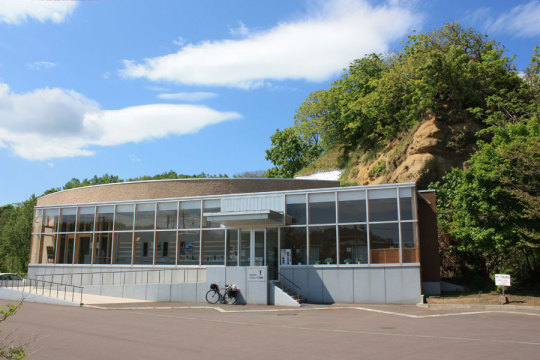

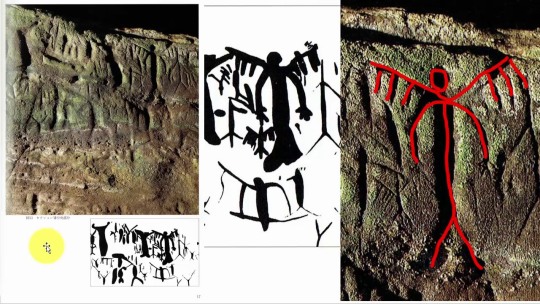
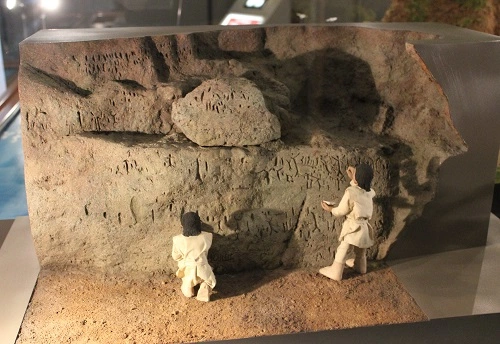
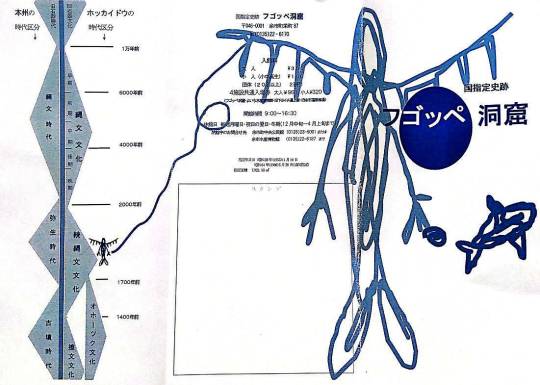
日本の考古学者の皆さん、日本の考古学の新しい記事へようこそ。そうは言っても、気を楽にして始めましょう。 - 1950年代、北海道余市市のフゴッペ洞窟で、縄文時代後期1000年から500年頃の一連の彫刻が発見された。 海水浴のため蘭島を訪れていた札幌市の高校生らが発見した。 これに先立ち、1927年に国鉄函館本線の土塁工事中に9個の彫刻が発見された。 - 洞窟からは動物や魚の骨が多数出土しました。 貝類では二枚貝やカタツムリ、魚類ではヒラメやヒラメなどの沿岸魚からクジラまで、哺乳類ではシカのほか、キツネやタヌキ、オオカミの骨も見つかりました。 - このことからも、当時は食糧が豊富にあり、人々は狩猟や漁業に専念していたことがわかります。 本州で稲作を中心とした弥生文化が発展していた頃、北海道では稲作をする必要はありませんでした。 人を乗せた船の彫刻は北アジアで見られるものと似ていると言われています。 - 気に入っていただければ幸いです。今後の投稿でお会いしましょう。良い一週間をお過ごしください。 - Welcome, Japanesearchaeologicalists, to a new installment of Japanese archaeology. Having said that, make yourself comfortable and let's begin. - In the 1950s, a series of engravings dating from the late Jomon period 1000-500 were discovered in Hokkaido Prefecture in the Fugoppe Cave located in the city of Yoichi. They were discovered by high school students from Sapporo who were visiting Orchid Island to bathe in the sea. Before that, nine carvings were discovered in 1927 during earthworks on the Hakodate main line of the Japanese National Railways. - Many animal and fish bones were excavated in the cave. Shellfish include bivalves and snails, fish range from coastal fish such as flounder and flounder to whales, and mammals include deer, and bones of foxes, raccoon dogs and wolves were also found. - This shows that at that time food was abundant and that people dedicated themselves to hunting and fishing. When the Yayoi culture based on rice cultivation was developing in Honshu, there was no need to grow rice in Hokkaido. The carvings of boats carrying people are said to be similar to those found in northern Asia. - I hope you liked it and we'll see you in future posts and have a good week. - Sean bienvenidos, japonistasarqueológicos, a una nueva entrega de arqueología nipona, una vez dicho esto pónganse cómodos qué empezamos. - En la década de los años 50 se descubrió en la prefectura de Hokkaido en la cueva Fugoppe localizada en la ciudad de Yoichi, se hallaron una serie de grabados que datan del periodo Jomon final 1000-500. Fueron descubiertos por estudiantes de secundaria de Sapporo que visitaban la Isla Orquídea para bañarse en el mar. Antes de eso, se descubrieron nueve tallas en 1927 durante los trabajos de remoción de tierra en la línea principal de Hakodate de los Ferrocarriles Nacionales de Japón. - En la cueva se excavaron muchos huesos de animales y peces. Los mariscos incluyen bivalvos y caracoles, los peces van desde peces costeros como la platija y la platija hasta las ballenas, y los mamíferos incluyen ciervos, y también se encontraron huesos de zorros, perros mapaches y lobos. - Esto demuestra que en aquella época abundaba la comida y que la gente se dedicaba a la caza y la pesca. Cuando la cultura Yayoi basada en el cultivo del arroz se estaba desarrollando en Honshu, no había necesidad de cultivar arroz en Hokkaido. Se dice que las tallas de barcos que transportan personas son similares a las encontradas en el norte de Asia. - Espero que os haya gustado y nos veamos en próximas publicaciones que pasen una buena semana.
#日本#history#歴史#archeology#考古学#japan#geography#prehistory#先史時代#映画#北海道#hokkaido#余市市#yoichicity#unesco#ユネスコ
39 notes
·
View notes
Text

The Seikan train ferry Mashu-maru permanently moored at Wakamatsu Wharf Quay in Hakodate, Japan, linked Hokkaido and Honshu islands from 1865 to 1988 when a railway tunnel opened. The ship is now a museum.
3 notes
·
View notes
Note

this is the ss Toya Maru a Japanese train ferry built by Japanese national railways on November 21, 1947. however she sank on September, 26 1954 when typhoon Marie hit the Tsuguru Strait between Honshu and Hokkaido, the typhoon caused the trains in her cargo hold to break loose crushing passengers, as water began to pour into her hull dousing her engines and setting her adrift until she eventually capsized, out of her 1,309 passengers only 150 survived while 1,159 passengers and crew perished, she is more well known as the Japanese Titanic.


"I remember this theme in a history class at my freshman year, it was surprising learnt it the first time"
5 notes
·
View notes
Text
Japan’s Tohoku Shinkansen passing at close to 300km/h. 🚝
—
The Tōhoku Shinkansen is a Japanese high-speed Shinkansen rail line, connecting Tokyo with Aomori in Aomori Prefecture in a route length of 674.9 km (419.4 mi), making it Japan's longest Shinkansen line.
It runs through the more sparsely populated Tōhoku region of Japan's main island, Honshu.
It was extended as the Hokkaido Shinkansen through the Seikan Tunnel to Shin-Hakodate-Hokuto (this section opened in March 2016) and is expected to be extended to Sapporo by 2030.
It has two Mini-shinkansen branch lines, the Yamagata Shinkansen and Akita Shinkansen.
The line is operated by East Japan Railway Company (JR East).
#Tohoku Shinkansen#Japan#East Japan Railway Company (JR East)#bullet train#High-speed rail#transportation#travel#passengers
9 notes
·
View notes
Text

北海道室蘭本線 C57 栗丘駅発車
#steam locomotive#landscape#japan#railway#photography#Muroran Line#Hokkaido#蒸気機関車#鉄道写真#北海道#C57#室蘭本線#栗丘駅
17 notes
·
View notes
Text
ᴛʜᴇ ɢʜᴏᴜʟɪꜱʜ ᴍʏᴛʜ ᴏꜰ ᴛᴇᴋᴇ-ᴛᴇᴋᴇ: ᴊᴀᴘᴀɴ’ꜱ ᴏɴʀʏŌ ᴡʜᴏ ᴇᴄʜᴏᴇꜱ ᴠᴇɴɢᴇᴀɴᴄᴇ

When we step into the domain of Japan, we can experience how modernity aligns with ancient cultures. It is what makes Japan a vibrant and colorful city with the most jaw-dropping landscapes along with the rich history that follows this country. But what we fail to see is the eerie folklores and gruesome urban legends that lie buried beneath the art of Japan. If we delve deeper, we can uncover that these legends are the primal fear of the locals, and perhaps some tourists. These tales are whispered down from generations to generations to ignite the flame of fear which spreads like a wildfire among the society.
So join me as we venture through the story of Teke-Teke, a vengeful spirit who haunts the streets of Japan hoping to seize her thirst for revenge on those who had wronged her.
The legend of Teke-Teke has lots of variations but commonly she was once a young woman. One variation of this legend happened a few years after World War 2. It is the story of an office woman from Muroran, Hokkaido named Kashima Reiko who was abused and beaten horribly by a group of military men before they had left her to perish. Desperate for help, she called out yet her calls were not heard. So she took the drastic measure to crawl and find her savior - only for her to fall onto a railway track before a train sliced her into two, separating her upper half and lower half. The other adaptation of this legend begins with a young girl who was mistreated by her new classmates and pushed onto a railway track, and before she could escape the oncoming train; her body was severed at the waist.
The actual horrifying element of this legend is that Teke-Teke’s spirit was not able to rest due to the hate and ill-treatment that she had received. Therefore, she transformed to an onryo so that she could get her fair-share of revenge, although in an unfashioned manner.
Across Japan, Teke-Teke is presented as a young woman with long black hair who appears to not have a lower half. Instead of fingernails, she has sharp claws which allows her to drag her mutilated body. Her name derives from the sound she makes while crawling, which obviously is “Teke-Teke”. It is said that she wanders around holding a sharp object which seems similar to a scythe.
People have rumored that Teke-Teke usually lurks in deserted urban areas or in quiet train stations at night. Once she has spotted her potential victim, she charges at them at an alarming speed of 150 km/h with the help of her elbows and claws.
The ghastly part of the story occurs when Teke-Teke does indeed catch her prey. Once caught in her grasp, Teke-Teke will slice her victim in half at the waist, condemning them to the same fate she had once suffered.
If you believe that you might have a chance of surviving Teke-Teke… forget about it. There is no chance. With her speed, she would be able to pounce on you before you even have the time to react. So scratch out ‘surviving Teke-Teke’ from your bucket list.
As with many urban legends, the story of Teke-Teke has several variations, each adding its unique twist to the terrifying tale. In some versions, she asks her victims a riddle before attacking. If they answer incorrectly, she kills them immediately. Additionally, another alteration is included in her motive. Though most say her reason for killings are due to revenge, there are some who say she does not kill as she is wandering around in hopes of finding her legs. There is also another motive, that she kills so that people who bully or abuse others, stop doing so because of the fear evoked by her.
While the legend of Teke-Teke may live on for generations, this blog will not, so let me draw this journey to an end. We know that Teke-Teke is an echo of the urban legends that spreads in Japan, but this legend is more than just a scary, spine-chilling tattle tale. This legend serves as a reminder of the vile consequences of the society’s cruelty and neglect. Furthermore, this legend, like any other urban legends, acts as a portal to the not-so-colorful folktales of Japan as an escape to all the cute, Hayao Miyazaki film-like aesthetic of the country. Now, I believe, is the correct way to part ways, so until next time!
…
My deepest apologies as I had forgotten to mention earlier that this legend concludes that if you hear the story of Teke-Teke, you are sure to see the ghost of a woman without her legs at night after three days of discovering her tale… Well then, that being said, stay safe, stay cautious, definitely DO NOT go to abandoned areas or train stations and good luck to you in case you do see the onryo.
2 notes
·
View notes
Text
70s Japan Trends Through the Music Charts (Part 2)
During the 1970s, the Japanese music industry was in the process of forming its identity. In addition to mirroring the musical preferences of the nation, the charts also served as a reflection of the prevailing societal trends and ambitions of that era. In this series, we chronicle the most significant musical trends of the decade.
70s Japan Trend Through the Music Charts (Part 1)
Trend #4: The Impact of Discover Japan
In 1970, Osaka hosted the World Expo, marking a significant milestone for post-war Japan following the 1964 Tokyo Olympics. To accommodate the influx of visitors, the government expanded the rail network, enabling over 60 million people—half of the nation's population—to journey to the World's Fair. However, as the Expo drew to a close after six months, concerns arose about the railways becoming obsolete. So, with the help of the ad agency Dentsu, they devised a campaign to stimulate domestic tourism by rail. The result was "DISCOVER JAPAN," one of the most iconic campaigns of the decade (which, curiously, was partially inspired by Ivy Fashion brand VAN).
"DISCOVER JAPAN" profoundly impacted Japanese society by popularizing solo travel and igniting domestic tourism, particularly among young women who ventured out on their own. This trend was further fueled by the launch of the first female fashion magazines, AnAn and Non-no, both of which regularly featured articles on charming touristic cities across the country. Cities known as "Little Kyoto," which retained their Edo Period architecture and charm, were particularly attractive to these travelers.
Influenced by fashion magazines, these trend-conscious women journeyed to towns throughout Japan, earning them the moniker "AnNon" (a fusion of AnAn and Non-no). Their impact during the 1970s was significant enough to be mentioned in a song by Sada Masashi, one of the decade's prominent folk singers.

"DISCOVER JAPAN," the print and TV campaign devised by Dentsu, is one of Japan's most successful and era-defining marketing campaigns.
Sada Masashi rose to fame in the early 1970s as part of the folk duo Grape before launching a successful solo career. In 1977, his song "Ehagakizaka," which paid tribute to his hometown of Nagasaki, mentioned identically dressed stylish young girls in denim, clutching AnAn and Non-no magazines while photographing their surroundings. This song vividly captured the aspirational girl culture of the 1970s, characterized by "healing" domestic trips in pursuit of tranquility and small pleasures, hippie and boho-inspired fashion, and folk music as the soundtrack.
Masashi Sada's song and the AnNon-zoku tribe aside, "DISCOVER JAPAN" had an immense impact on different layers of Japanese society. And that included the music charts. In 1971, the two best-selling singles, "Watashi no joka-machi" by Rumiko Koyanagi and "Shiretoko ryojou" by Tokiko Kato, surpassed 1 million copies sold. Both perfectly embodied the campaign's spirit in highlighting the hidden beauties of Japan.
"Watashi no jokamachi," or "My Castle Town," marked Koyanagi's explosive debut, selling over 1.3 million copies. This enka-infused kayokyoku ballad paid homage to cities with Edo-like architecture, often centered around a feudal lord's castle, evoking a peaceful, melancholic atmosphere in its lyrics. Rumiko continued to sing about regional Japan's charms the following year with another hit, "Seto no Hanayome" (The Bride of Seto). Meanwhile, the folk-inspired "Shiretoko ryoujou" (Shiretoko Journey) celebrates the unique beauty and culture of the Shiretoko peninsula on Hokkaido Island.
In the same year, other artists also succeeded by spotlighting provincial Japan. Enka superstar Shinichi Mori delved into this theme with "Boukyou" (Nostalgia). At the same time, Yuuko Nagisa found success with a Japanese rendition of The Ventures' "Kyoto Doll," titled "Kyoto no Koi" (Love in Kyoto). She would go on to have another top-selling single with her version of another Ventures song, "Reflection in Palace Lake," transformed into "Kyoto Bojo" (Kyoto Longing).
Trend #5: The Legend of Momoe Yamaguchi
"Aidoru" or "idols" are cute girl/boy-next-door types who sing, dance, act, host TV shows, and star in countless commercials. They stand as one of the cornerstones of the thriving multi-billion yen Japanese entertainment industry. The 70s was an essential era for consolidating this type of star. And one idol, in particular, shone the brightest: Momoe Yamaguchi.
Momoe is a legendary star and an example of an "aidoru" who excelled at everything, exuding sophistication, talent, and sex appeal. The fact she retired from public life at the height of her fame cemented her mythical status.

Momoe Yamaguchi in her prime, the idol industry's gold standard.
In 1972, at the tender age of 13, Yamaguchi auditioned for the talent search TV show "Star Tanjou!" (A Star is Born). Her crisp singing voice and mature beauty immediately captured the industry's attention. Hori Production, the entertainment agency, and Sony CBS label swiftly recognized her potential and signed her. In May 1973, five months after her televised audition, she made her official debut with the single "Toshigoro" (Adolescence). Although Sony had a history of immediate success with newcomers, Momoe's first single received a tepid response, so her label decided to court a bit of controversy for her sophomore outing. "Aoi kajitsu" (Ripe Fruit) had the innocent-looking 14-year-old girl singing, "you can do whatever you want to me, even if they say I'm a bad girl." The racy lyrics worked, and the single was a success.
A few months later, Yamaguchi's backers repeated this formula with "Hito natsu no keiken" (One Summer Experience). The song began with a suggestive promise: "I'll give you the most precious thing a girl has." The lyrics were laden with double entendres, describing a "sweet trap of temptation" that can only be experienced once. She sang, "if the person I love is pleased, then I'm happy. I don't mind if you break it," which could be understood as a reference to a girl's heart or hymen.
The single was an explosive hit, propelling 15-year-old Yamaguchi into the A-list. For the remainder of her career, she was frequently asked about the "most precious thing a girl has," to which she'd always offer a stern-looking reply: "Her devotion."
The young, mature-looking girl singing thinly veiled songs about sexual awakening with a dark, serious-looking image set her apart from the prevalent happy-go-lucky idol aesthetic. However, it wasn't merely reliance on gimmicks that transformed her into a legend. In 1976, after firmly establishing herself as a star, she parted ways with her frequent collaborators, lyricist Kazuya Senke and composer Shunichi Tokura. Beginning with the single "Yokosuka Story," she partnered with the husband-and-wife duo Yoko Aki and Ryudo Uzaki.
Ryudo Uzaki, the frontman of the popular enka rock band DOWNTOWN BOOGIE WOOGIE BAND, infused her kayokyoku tunes with a rock edge. Through her lyrics, Yoko Aki redefined Momoe's image as a confident, clear-eyed girl transitioning into womanhood. Sony initially opposed Momoe's desire to collaborate with Aki and Uzaki, but the partnership ultimately helped her reach her commercial peak.
"Yokosuka Story" was Momoe's first single to reach the number 1 spot on the weekly charts. The Aki-Uzaki duo penned several other hits for her, including "Playback Part 2" and "Sayonara no mukougawa" (The Other Side of Goodbye), and opened doors for her to collaborate with other luminaries of Japanese music. Two of her most memorable hits, "Cosmos" and "Ii hi tabidaichi" (Beautiful Day Departure), both released in 1978, were penned by folk superstars Masashi Sada and Shinji Tanimura of Arisu, respectively. The latter became the theme song for the iconic DISCOVER JAPAN TV commercials.
Speaking of commercials, idols worth their salt can't limit themselves to music. Momoe earned millions as the face of Toyota cars, Fujifilm photographic films, Casio watches, and Glico confectionary products, among others. She also starred in highly rated TV dramas and ventured into the world of film.
Starting in 1974, she appeared in two romantic films per year, always paired with Tomokaza Miura as her co-star. While Momoe pursued various ventures, Miura's acting career primarily revolved around being her on-screen romantic partner. Their undeniable chemistry and the box-office success of their films led to them being known as the "golden combination."
In a concert at the end of 1979, Momoe stunned her audience by revealing that her on-screen partner, Miura, was her real-life boyfriend. In a subsequent press conference in March of the following year, she confirmed her intention to marry him and retire officially. In September, she released her autobiography, which sold over 1 million copies in a month. In October, she bid farewell through a series of TV specials and a concert at Nippon Budokan. Her farewell concert reportedly earned Hori Productions over 20 million dollars, according to figures provided by the agency to Billboard magazine at the time. Momoe's success allowed HoriPro to become one of the best-established entertainment agencies in Japan, a position it still holds today. Her final performance took place at HoriPro's 20th-anniversary event, where she sang "Ii hi tabidaichi." In November, she married Miura and disappeared from the media.
The Japanese public obsession with her never waned. Paparazzi tried to capture her at her son's kindergarten graduation ceremony and doing classes at a local driving school. Many speculated she'd eventually come out of retirement. She never did, which only helped feed the obsession around her.
During the 1970s, Yamaguchi enjoyed immense success, but she was one of many popular female idols. The narrative created by her retirement elevated her to the status of a larger-than-life legend. She became the gifted, beautiful young woman who succeeded as a singer, a TV actress, and a movie star before choosing the ultimate happy ending: marriage. By choosing love, Momoe Yamaguchi, the legendary idol, transformed into an ordinary woman—a real-life fairy tale that resonated deeply with Japanese society.
Her decision was driven by profound motivations. Momoe revealed in her autobiography that she was raised by a single mother, the product of an extramarital affair. Her challenging upbringing and her father's late appearance to capitalize on her fame instilled a deep desire for a traditional, happy family life. She also grew weary of the relentless demands of stardom and the repetitiveness of performing the same songs. Thus, she made a heartfelt choice to relinquish fame and public life to give her husband the most important thing a girl has: her devotion.
Trend #6: Idols' Rise
The term "idol" in the Japanese entertainment industry finds its origins in the French film "Cherchez l'idole" (1963), which enjoyed immense popularity in Japan. Initially, "Aidoru" was used to describe the film's star, Sylvie Vartan, before it evolved into a general term to describe youthful-looking triple-threat domestic stars.
Before the coining of the term, "idol-like" stars had already existed. In the 1930s, Machiko Ashita attracted crowds to the Moulin Rouge Shinjuku and served as the face of several brands. In the 1950s, rockabilly stars enjoyed massive popularity among the youth, and the 1960s saw the rise of manufactured "group sound" bands and the female duo The Peanuts, comprised of twin sisters. Legendary stars such as Hibari Misora, Sayuri Yoshinaga, Teruhiko Saigo, Yukio Hashi, and Kazuo Funaki thrived as both movie stars and successful singers.
However, the 70s marked the consolidation of the "idol" aesthetic and career path, paving the way for the "golden era of idols" in the next decade. Essential for it to happen was the widespread adoption of the medium where idols shine the brightest: television.
TV allowed entertainment agencies to aggressively push their young, fresh-faced talents in front of a broad audience. They populated music and variety shows, commercials, and dramas. They were immaculate, life-sized stars ready to play the part of the nation's sweethearts.
Although history has crowned Momoe Yamaguchi as the ultimate 70s idol, she was just one among many during most of that decade. A closer examination of the numbers reveals that, among female idols, Mari Amachi had the most significant short-term impact during that time.
Amachi was first introduced on the popular TBS TV drama "Jikan desu yo" (It's Time) in 1971, playing "Tonari no Mari-chan" (Next Door Mari-chan). She played the minor role of a cute girl who lived close to the show's primary setting, a family-run public bathhouse, and often appeared by her window, playing guitar and singing. By October, with the backing of the biggest entertainment agency of the era, Watanabe Production, and Sony CBS, 19-year-old Mari Amachi officially debuted with the single "Mizuiro no Koi" (Light Blue Love). It was a hit—the first of many. Mari would be 1972's best-selling act, achieving high sales with four albums and five singles.
Mari's image, characterized by an innocent aura, a happy-go-lucky personality, and frilly dresses as stage outfits, became the prototype for female idols. Her short hair and chiseled smile earned her the nickname "Sony's Snow White," evoking the image of a fairytale princess. Unsurprisingly, she was particularly popular with children, leading Watanabe Pro to license her likeness for various goods, including the coveted "Do-Re-Mi Mari-chan" Bridgestone Cycle bicycle, highly sought after by young girls in the early 70s.
Despite her rapid rise to fame, Mari's time at the top was short-lived. By 1974, another Watanabe Pro idol, Agnes Chan, was already surpassing her in sales. In 1977, Mari's health deteriorated, and she took a lengthy hiatus, officially attributed to thyroid issues but later revealed to be depression triggered by her waning popularity. In 1979, she attempted a comeback, even bagging an endorsement deal for an ultrasonic facial device, one of the year's hit items for women. But her time had passed, and she didn't find much success. Eventually, Mari's career took unconventional turns, including involvement in a softcore porn movie, the release of nude photobooks, and a transition to becoming a "fat" talento (TV personality), followed by a weight-loss book.
In 2015, in her last public interview, she revealed that, at 63, she was living in a retirement home in the Tokyo suburbs. Her fan club covered her expenses, while her daughter provided a modest weekly allowance. This marked a stark contrast to her glamorous peak years and serves as a reminder of the challenges idols face in the Japanese entertainment industry, particularly women, and how easily discardable idols can be. It also shows how wise Momoe Yamaguchi was, bowing out gracefully at the right time.
However, Momoe Yamaguchi and Mari Amachi represent two extremes within the realm of idols. While Mari achieved record profits for two years before facing decline and eventual obscurity, Momoe maintained relevance for nearly a decade before choosing to marry her on-screen partner, retire, and become a living legend. Most other 70s idols did not experience such remarkable destinies.
In 1971, two other young idols, Rumiko Koyanagi and Saori Minami, made their debut alongside Mari Amachi. The trio was collectively known as the "shin sannin musume," or the "three new girls." Their joint concert at the Budokan on Christmas of 1972 solidified their shared nickname.

The Shin San-nin Musume. Clockwise: Rumiko Koyanagi, Mari Amachi, and Saori Minami.
Rumiko Koyanagi had her skills honed at the Takarazuka Music School. Takarazuka is a very traditional, all-female theater group, and their training academy is known to be highly rigorous and selective. Koyanagi graduated top of her class but wanted something other than a musical theater career. Instead, her goal was to debut as a solo singer. So she left the Takarazuka Revue and signed with Watanabe Pro and Warner Pioneer label to fulfill her dream. Her first song, "Watashi no joka-machi" (My Castle Town), buoyed by the "Discover Japan" boom, surpassed 1 million copies sold, becoming the best-selling single of 1971.
Rumiko's repertoire predominantly featured enka-influenced kayokyoku. Her classical sound may not have been as appealing to the youth as some of her peers' slightly more modern tunes, but it ensured her stable sales throughout the decade. In her sixties, Rumiko has reinvented herself as a passionate soccer fan and a glamorous senior lady, sharing lifestyle tips and her love for Chanel and Lionel Messi on Instagram. She also conducts dinner shows, a lucrative type of intimate concert usually held at luxury hotels, where fans pay hefty prices to enjoy a multi-course dinner while listening to nostalgic hits.
The third "shin sanin musume" is Saori Minami. Minami didn't have a million-selling debut like Rumiko, nor did she become an instant sales behemoth like Mari. That didn't mean she was less impactful. Quite the opposite. Hailing from Okinawa, still under US occupation during her debut, Saori impressed Japan with her exotic beauty. In 1971 and 1972, she outsold every other female idol in bromide sales. Bromide is the local terminology for photographic portraits of celebrities, and historically, its sales are the best way to gauge how popular an idol is.
Her first single, "17-sai" (17 years old), became a classic and enjoyed enduring popularity, with several artists covering it over the decades. After retiring in 1978 upon her marriage to legendary photographer Kishin Shinoyama (known globally for his portraits of John Lennon and Yoko Ono), Saori made a comeback in 1991 but has made only sporadic public appearances since then.
Two years after the emergence of the "shin sannin musume," a new trio of newcomers known as the "Hana no Chuusan Trio" or the "Chuusan's Flower Trio" (a reference to the fact all of them were in Chuusan, the third year of middle school) came into the spotlight. Masako Mori, Junko Sakurada, and Momoe Yamaguchi were all revealed in the talent search TV show "Star Tanjou" (A Star is Born). In 1975, by the time they were in their second year of high school (kou 2), they co-starred in the successful film "Hana no Kou 2 Trio."
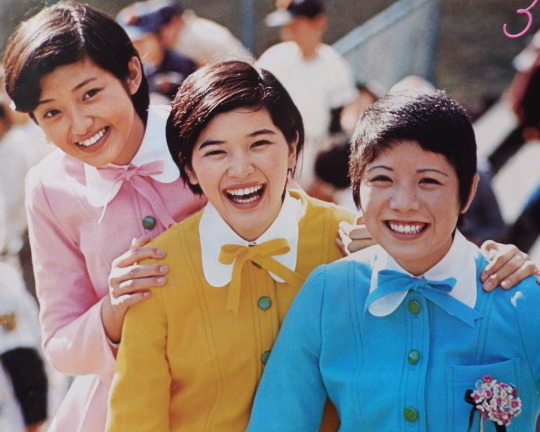
The Hana no Chuushan Trio: Momoe Yamaguchi, Junko Sakurada and Masako Mori.
At 13 years old, Masako Mori secured her place as the inaugural "Star Tanjo" grand champion in 1971. The following year, she debuted under Hori Production and swiftly soared to success. Mori's music was deeply influenced by enka, and by the end of the decade, she had solidified her status as a fully-fledged enka star. In 1986, she tied the knot with enka superstar Shinichi Mori, leading her to retire from the entertainment scene. However, in 2005, following her divorce, the former idol made a comeback, embarking on tours and participating in TV dramas for a few years before ultimately deciding to bid farewell to her career once more on her 60th birthday in 2019. Notably, she shares three children with Shinichi Mori, including TAKA, the lead vocalist of the famous rock band ONE OK ROCK.
Junko Sakurada clinched victory at "Star Tanjo" in 1972 at 14. Subsequently, she signed with Sun Music agency and Victor Music, marking her official debut in February 1973 with the release of "Tenshi mo yumemiru" (Angels Also Have Dreams). Given their similar age, niche, and close debut dates, the industry and some fans pitted her against Momoe Yamaguchi despite their behind-the-scenes friendship. Both idols enjoyed substantial popularity, with Yamaguchi usually holding an edge in sales. The exception was in 1975 when Junpei, as fans affectionately knew her, dominated as the best-selling female idol in music and bromide sales.
In addition to her music career, Junko excelled as an actress. In 1983, she opted to conclude her singing career to dedicate herself solely to acting. A decade later, in 1993, the former idol shocked Japan by announcing her participation in a mass wedding ceremony organized by the controversial South Korean Unification Church at the Olympic Stadium in Seoul. Her husband had been chosen for her by the church.
Her association with the cult brought her career to a halt. With her image becoming closely linked to the church, TV networks and advertisers distanced themselves from her. Consequently, Junko relocated from Tokyo, devoting herself entirely to her faith and family. Since then, she has made a few comebacks. In 2006, she published a highly-publicized essay book, and in 2013, she celebrated the 40th anniversary of her debut with a special concert. In 2017 and 2018, she returned to the stage, coinciding with her musical comeback and the release of a new album, "My Ideology."
After this project, Junko has remained out of the spotlight, with an official return unlikely unless she completely renounces her ties with the United Church. The cult's controversial image became even more repellent following the murder of former Prime Minister Shinzo Abe in July, committed by a young man who attributed his family's financial and psychological turmoil to the church. Consequently, the cult's unethical financial practices and ties to the ruling Liberal Democratic Party have become widely discussed topics in the country. For Junko Sakurada, her affiliation with the cult has overshadowed her otherwise successful decades-long career.
Completing the trio alongside Junko and Masako was Momoe Yamaguchi. Although Yamaguchi's career has eclipsed that of almost every other idol of the 1970s, she initially experienced the least success among the three young girls. Unlike her peers, both of whom had claimed grand champion titles at "Star Tanjou!," Momoe secured second place at her final showcase. Moreover, her debut single was the poorest-selling among the trio. However, she would ultimately emerge as the definitive idol, and her retirement would serve as the perfect conclusion to an epoch-making career.
While Momoe, Junko, Masako, Mari, Agnes, Rumiko, and Saori, among others, collectively set an impressive precedent for future female idols, male idols also played a significant role in the era. In terms of profitability, male idols reigned supreme, thanks to the unwavering loyalty of their female fanbase.
Johnny Kitagawa, the late founder of Johnny's Jimusho, eventually became the most influential figure in the entertainment industry. He monopolized this niche for decades with his boybands. However, during the 1970s, Kitagawa was not among the most powerful. Although his agency achieved considerable success with the boyband Four Leaves, it was soloist Hiromi Go who briefly held the nation under his sway between 1973 and 1974. Unfortunately for Kitagawa, this period of dominance proved fleeting, as Go departed for another agency in 1976, signaling that Johnny Kitagawa still had much to accomplish to solidify his authority.
With Johnny's domination still on the horizon, Hideki Saijo emerged as the most influential male idol of the 1970s. Saijo enjoyed success with several hit singles, including the ballad "Chigireta Ai," released in 1973, and 1979's "Young Man," a cover of Village People's "Y.M.C.A." Demonstrating the power of devoted fangirls, Saijo became the first domestic solo artist to perform a concert at Nippon Budokan. His popularity quickly transcended the Budokan, propelling him to the status of a stadium headliner and solidifying his position as the decade's top concert ticket seller.
The loyalty of fangirls meant that male idols consistently outperformed any act in ticket sales. In the 1960s, The Tigers, considered one of the pioneers of the "group sound" movement and regarded by many as Japan's first idol group, became the first domestic act to hold a stadium concert. By the following decade, the "group sound" era had ended, but some former band members successfully transitioned into solo careers.
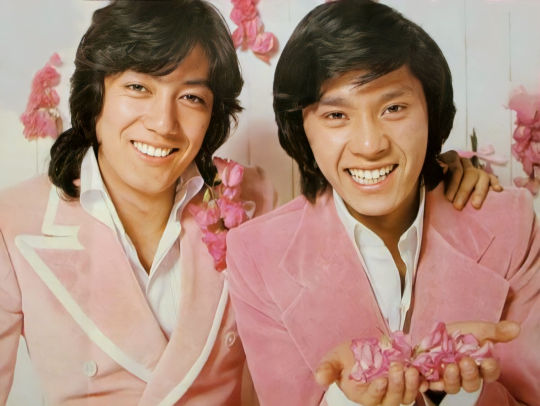
Kenji Sawada and Hideki Saijo, the two stadium-selling male idol superstars from the 80s.
Kenji Sawada, the former lead vocalist of The Tigers, remained a constant presence on the charts throughout the 1970s. Under the guidance of the influential Watanabe Pro agency, Sawada succeeded as a singer and actor. He brought a rockstar aura to his performances, incorporating impactful and extravagant visual elements and pioneering the use of makeup, drawing inspiration from David Bowie and glam rockers. In doing so, Sawada laid the groundwork for visual kei, a movement that would revolutionize Japanese rock in the late 1980s and early 1990s. Nicknamed "Julie" since his early days in the 1960s due to his admiration for Julie Andrews, Sawada continues to thrive as a prominent music figure in Japan, one of the few stars from that era still capable of selling out stadiums.
While girls' adoration often paves the way for male idols to enjoy lengthy careers, there are exceptions to this rule. In 1974, Finger 5 became one of the best-selling idol groups in the country. Comprising five young brothers from Okinawa, they were marketed as Japan's response to the Jackson 5 and consistently churned out hit singles. However, just two years later, their popularity took a nosedive. Several factors contributed to this decline, notably their heavy reliance on the two youngest members, aged only 10 and 12. These youngsters not only grappled with exhaustion from relentless work schedules but also faced the challenges of puberty, causing their voices to change and preventing them from hitting the right notes in their songs. Consequently, Finger 5 lost its appeal.
Finger 5's brief career underscores a crucial aspect of the idol industry: the importance of youthfulness. In Japan's gender-biased society, some male idols from the 1970s were granted the opportunity to age gracefully, evidenced by a few who maintained success well into their 60s and 70s. In contrast, female idols invariably confronted the pressures and inevitable decline associated with aging.
This brings us back to the quintessential idol of that era, Momoe Yamaguchi. By choosing to retire and steadfastly resisting any temptation to reenter the public eye, Yamaguchi effectively became frozen in time at 21 years old, her age at the moment she bid farewell to both showbiz and the public. This solidified her status as a legendary and unattainable icon—an idol who never aged.
70s Japan Trends Through the Music Charts (Part 3)
#enka#kayokyoku#momoe yamaguchi#70s japan#1970s#japanese music#jpop#discover japan#heibon punch#kenji sawada#hideki seiji#junko sakurada#70s idols#finger 5#mari tenchi#rumiko koyanagi#saori minami#four leaves#hiromi go
20 notes
·
View notes
Text
Akshuallyyyy, JR East and Central are profitable operationally (primarily through the Shinkansen services). I think JR West is also. Kyushu, Hokkaido, Shikoku and JR Freight are not profitable, and will never be, but despite this, are under constant pressures to rationalise, cut and abolish. Since the privatisation in 1987, Hokkaido has shed 2/3 of its network, and closures have continued to this day. Service frequencies are also not that good on many lines, and often subject to cuts. The governments pro-car agenda prevails and new motorways are constantly approved as railways close and use dwindles (motorways that, too, will never make up for their costs, obviously). There is a concern that the new dumb Chuo shinkansen, the maglev between Tokyo and Nagoya, will decimate JRC's profitability by reducing the ridership on the Tokaido Shinkansen and in turn funnelling it into the more expensive system. While Europe saw most of its railway cutbacks in the years from 1950 to 1980, and thereafter often stopped closures and even restored some lines, this is not true in Japan; the closures dramatically increased at this date, because prior to this, the LDP leaderships generally used the railways as a developmental tool. The various Beeching axes prepared at various times in the 1960's and 70's were ignored, and new rural line construction continued until the 1977 stoppage.
It's worth noting that the Japanese state railways in 1984 was, on the whole, profitable (after debt transfers to the central government done as a preparation for the eventual privatisation). But the anti-labour Nakazone government was determined to crush the unions, and the way to do this was by splitting and privatising the undertaking (this was the intentional purpose). Tens of thousands of workers were blacklisted for being in unions and were refused rehiring by the new private companies (that did remain state owned for a while--indeed, the unprofitable ones remain majority state owned because no one wants to buy.)
Several of the private commuter railways are, however, also not profitable in operations, and make most of their income from retail and property stuff adjacent to the railways--like Odakyu and Seibu. As a general rule, long-distance services are more likely to be operationally profitable than commuter services.
In short, Japan's railways are in a death spiral of rationalisation, outside of Tokyo and Osaka.
People who talk about what population density is necessary to "justify" a rail system are wrong but they're wrong in the opposite way from how they think. Even in Japan which has more than twice the population density of China the rail system is not profitable. JR makes most of its profit by operating malls and collecting rent from vendors. If you blindly follow profit instead of considering the broader social benefits the result will always be putting your rail system into a death spiral of rationalization. Stop expecting public transport to turn a profit that's not what it exists for.
31K notes
·
View notes
Text
JR北海道は地理ガチャハズレ
Can you make a lot of money doing business in a place with no people? Absolutely impossible. Trying to profit from railway operations in Hokkaido's depopulated areas is just not feasible.
In the future, Hokkaido may become either too difficult to reach due to a lack of bus passengers or plagued by traffic congestion, resulting in significantly longer travel times than planned.
0 notes
Text
Tokyo DisneySea "Fantasy Springs" fully wrapped Shinkansen bullet train to operate between Tokyo and Shin-Hakodate-Hokuto from October 10.
Tokyo Disney Resort and East Japan Railway Company announced that they will operate the Magical Journey Shinkansen, a bullet train designed for Tokyo DisneySea’s new Fantasy Springs theme port. The service period is from October 10 to early June 2025, and the service section is the Tohoku and Hokkaido Shinkansen (between Tokyo and Shin-Hakodate-Hokuto). The main trains will operate as “Hayabusa,”…
0 notes